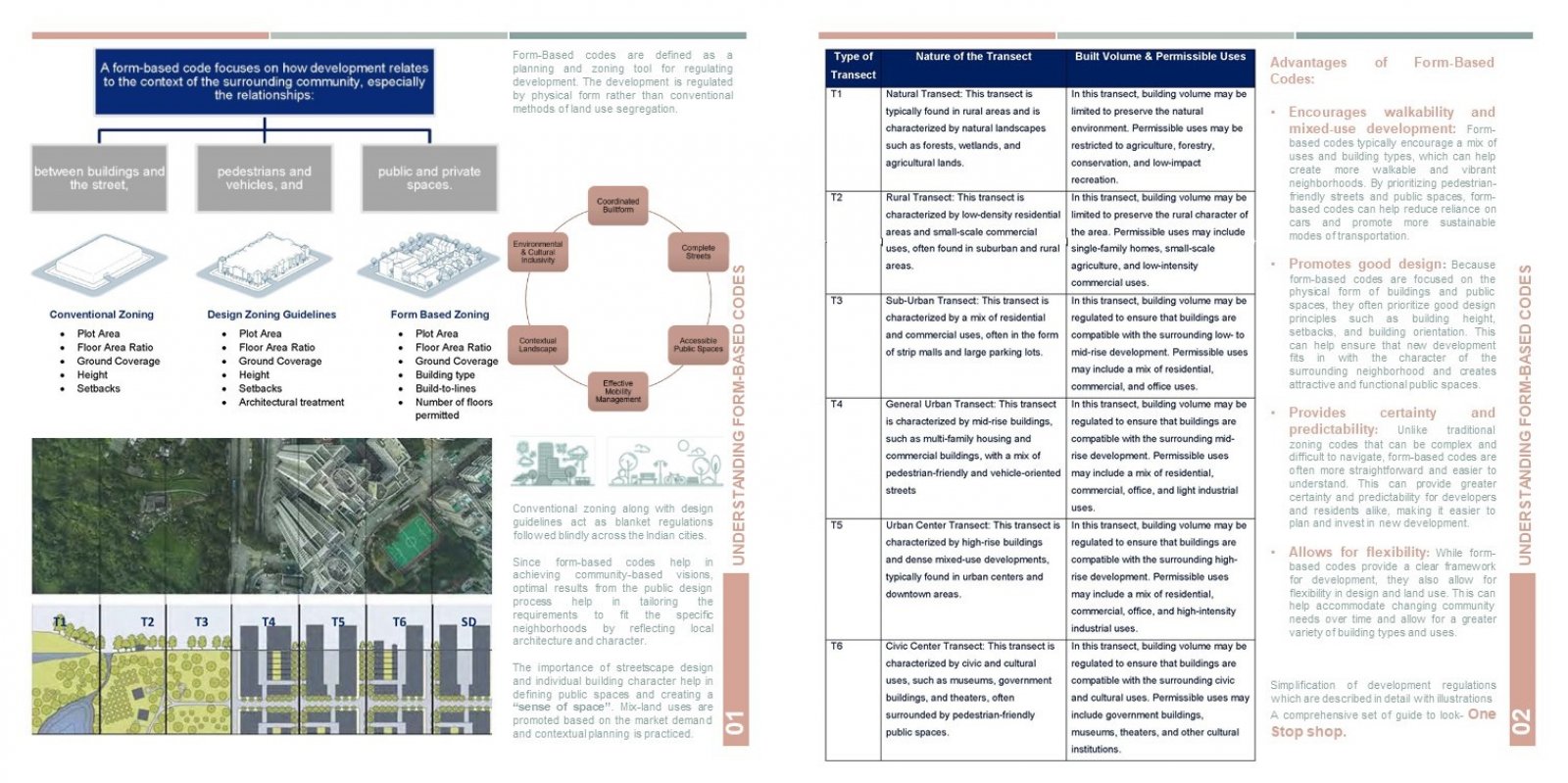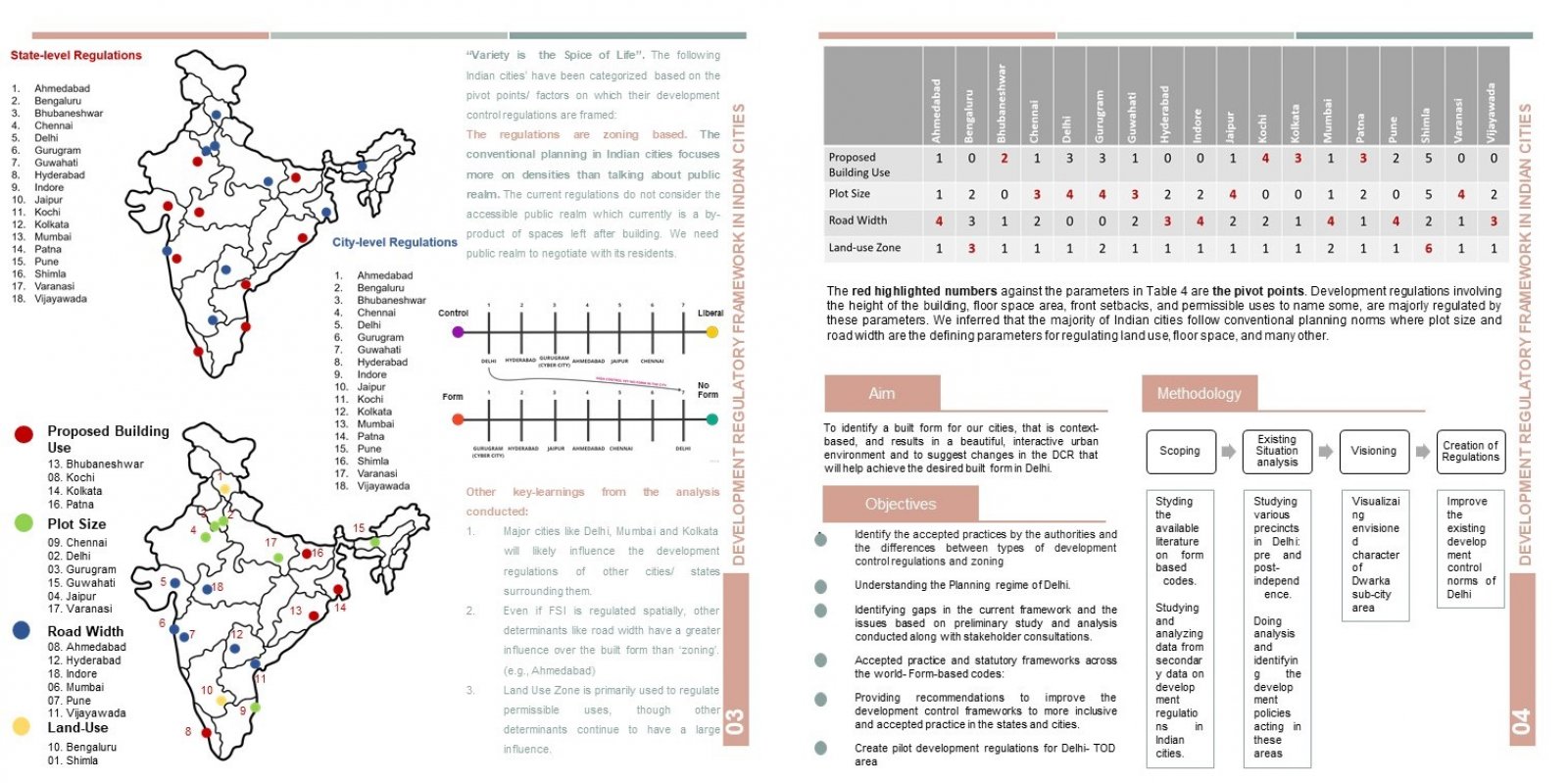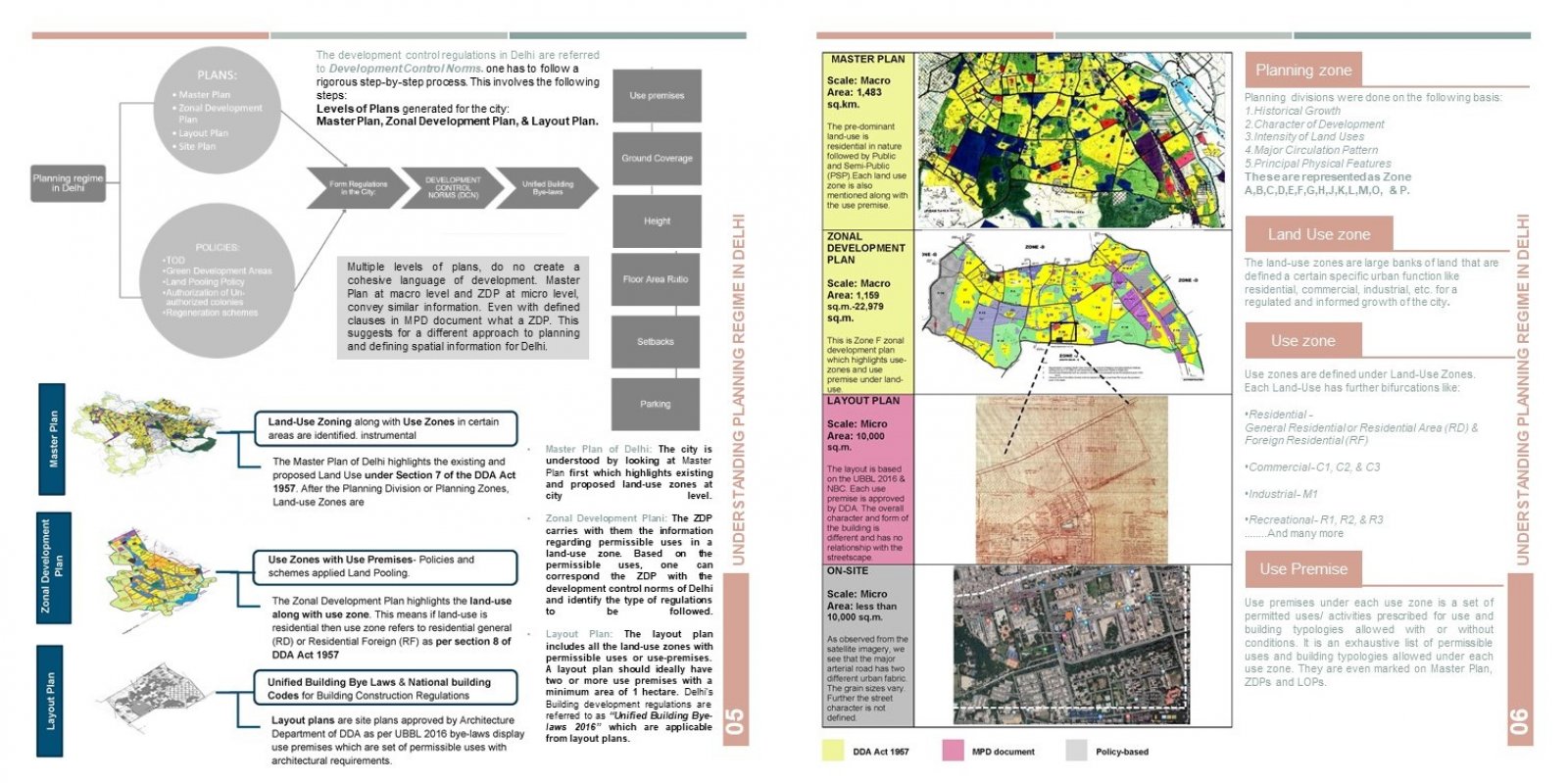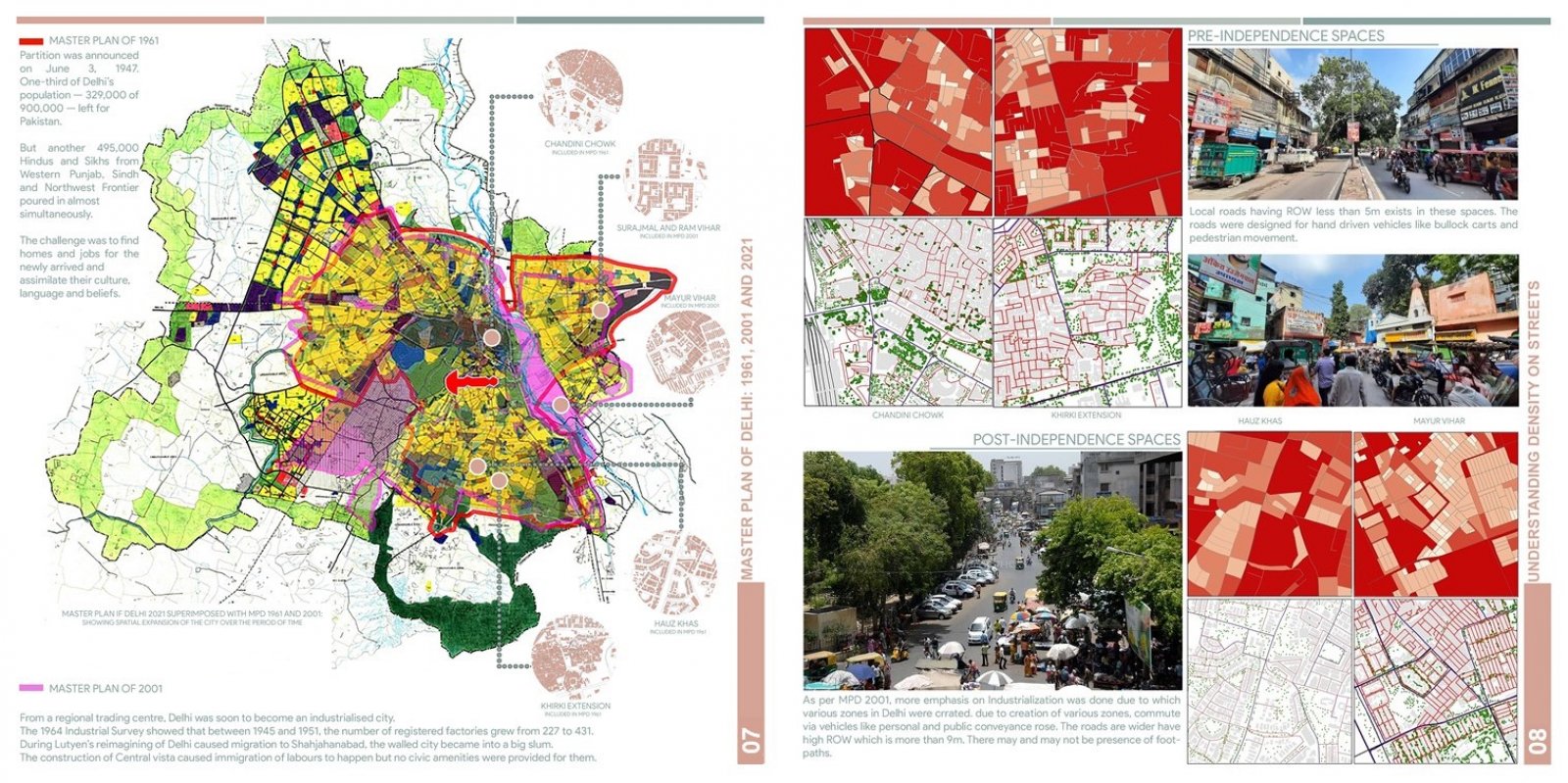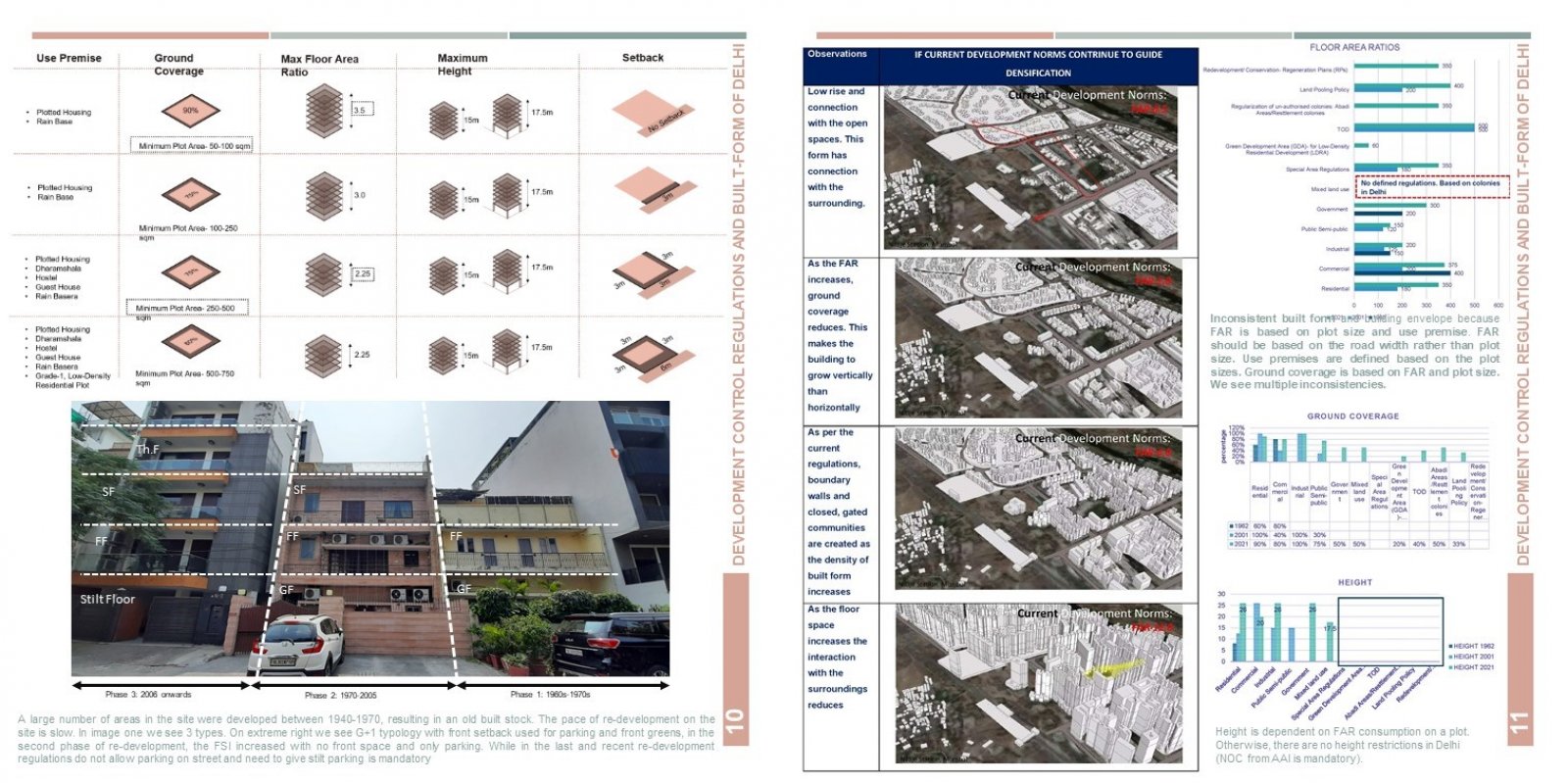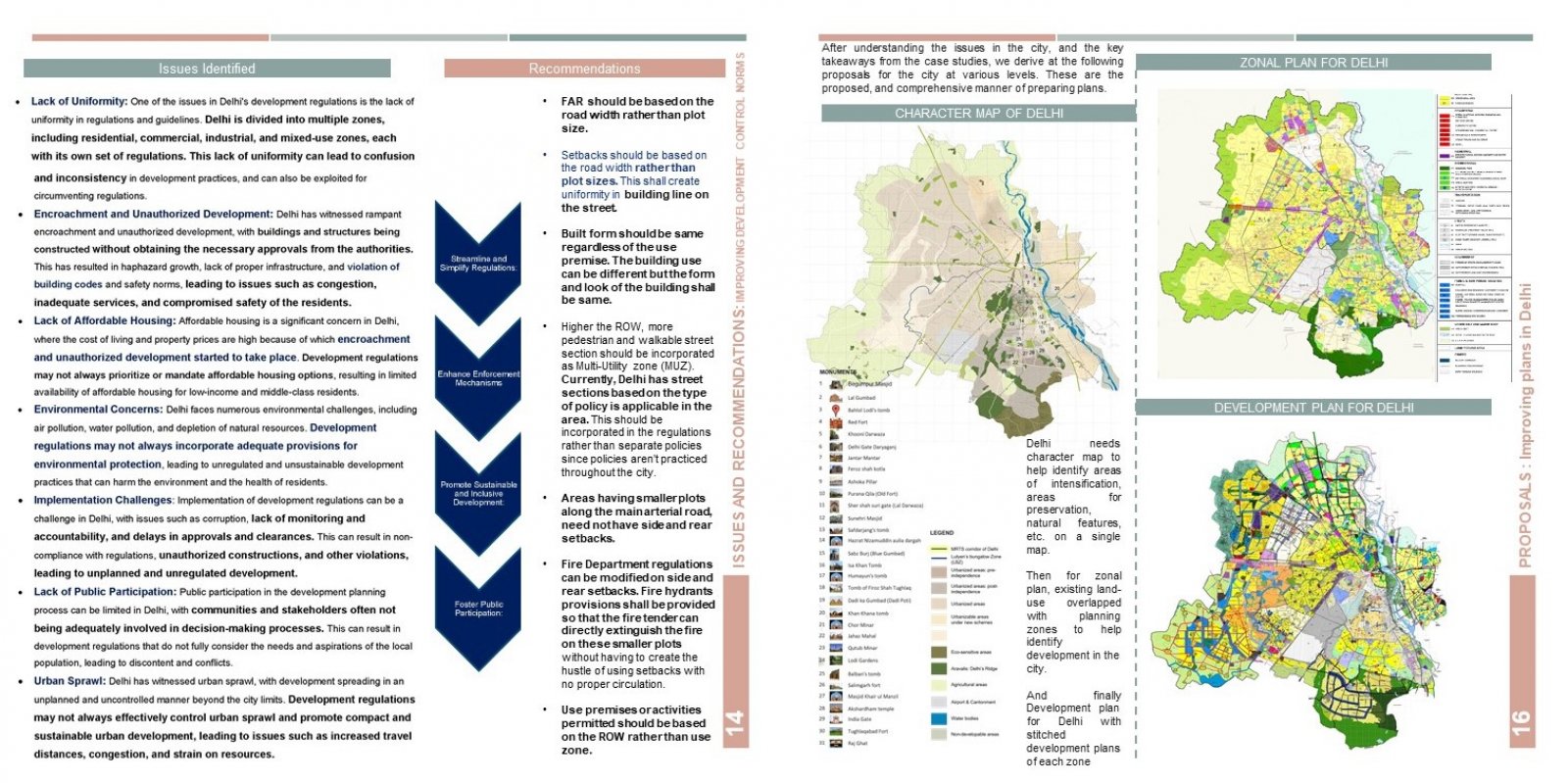Your browser is out-of-date!
For a richer surfing experience on our website, please update your browser. Update my browser now!
For a richer surfing experience on our website, please update your browser. Update my browser now!
SYMBOL IN TRANSITION: Delhi has undergone multiple changes over the years with rapid urbanization, commercialization, and the influx of migrant population. Conventional planning standards have prevailed which are rule-based and more focused on lane use zoning with no attention to the context of the city. The three interrelated concerns in the city are Form, Use, and Management. One of the issues in Delhi's development regulations is the lack of uniformity in regulations and guidelines. This lack of uniformity can lead to confusion and inconsistency in development practices. The cost of living and property prices are high because of which encroachment and unauthorized development started to take place. Lack of public participation, monitoring and accountability, and delays in approvals and clearances, has led to uncoordinated built form in the city.
Since these regulations are prescriptive in nature, the land is often under-utilized and unregulated growth in the city takes place. In this process, no attention is paid to accessible public realm, streetscape, built form ratios, and overall holistic development of the city. Therefore, the challenge today is to create a synergy between conservation and development, without leading to aesthetic or environmental degradation, bearing in mind the principle of the “larger public good” as against the narrow private interest.
Improving Delhi's development control norms requires a collaborative effort involving government agencies, policymakers, urban planners, communities, and other stakeholders. By streamlining regulations, enhancing enforcement, promoting sustainable and inclusive development, fostering public participation, planning for infrastructure, regular review and updates, coordination, and capacity building, Delhi can work towards more effective and responsible urban development. The need to bring a comprehensive development language in Indian cities shall help in a predictable, more uniform urban form, and create a link between greenfield and brownfield development patterns in achieving the “identity of the city”. Therefore, the need to have Form-Based codes which develop a comprehensive set of development regulations/norms with detailed layouts of every element in town planning.
